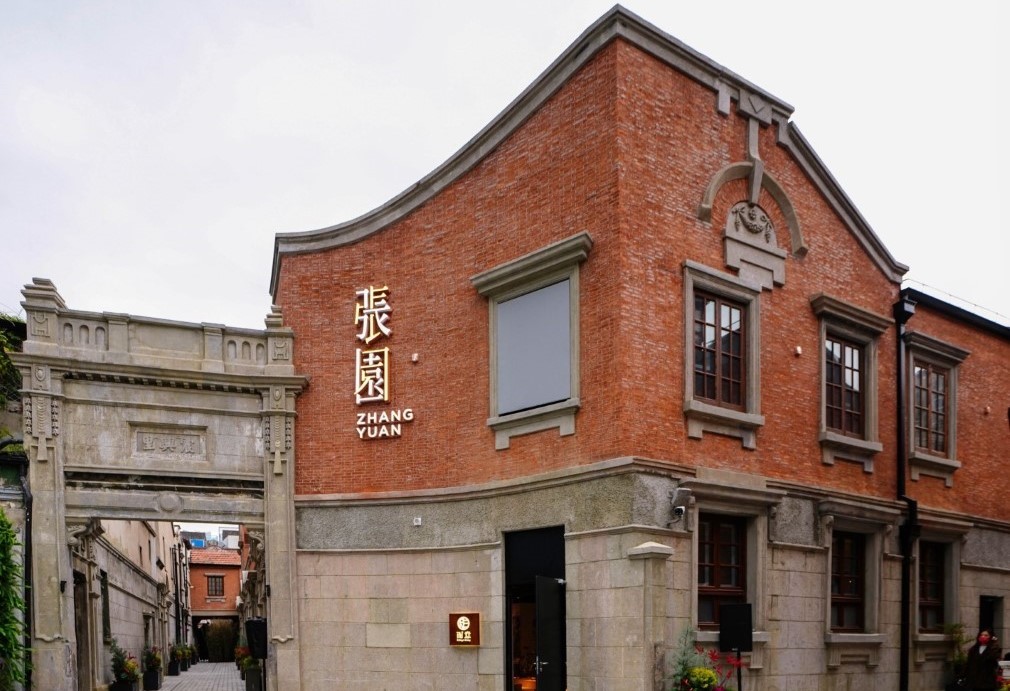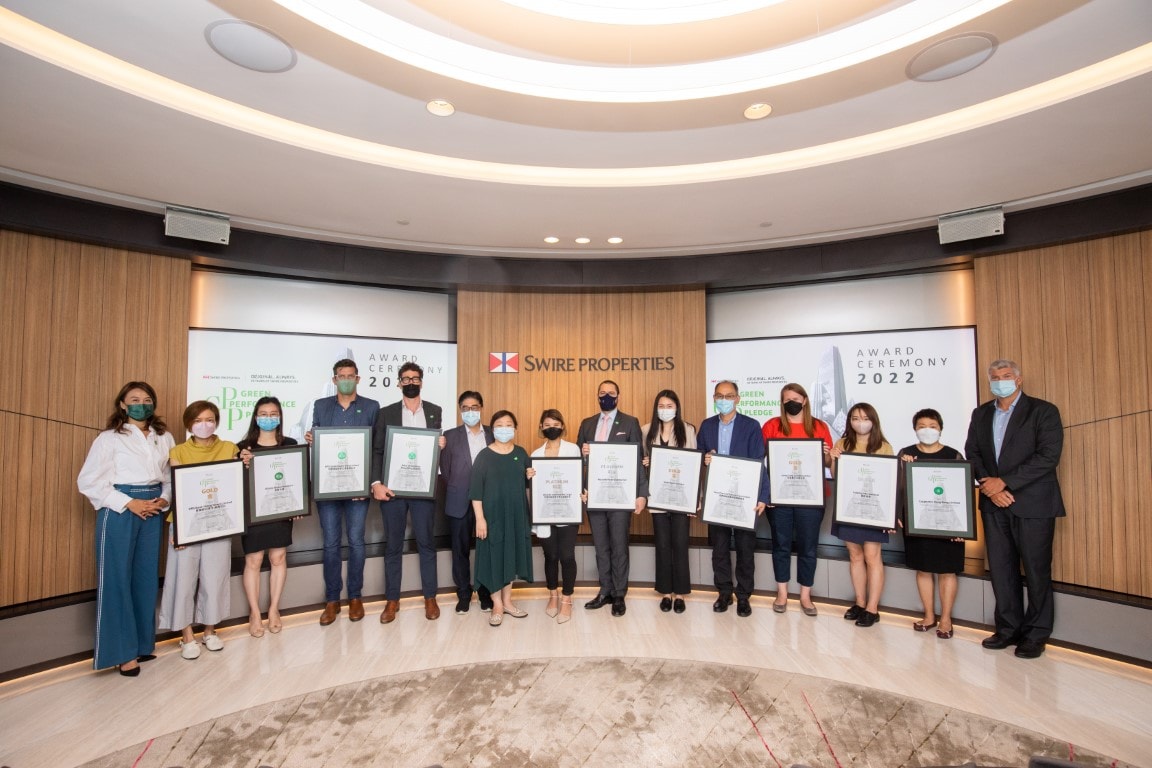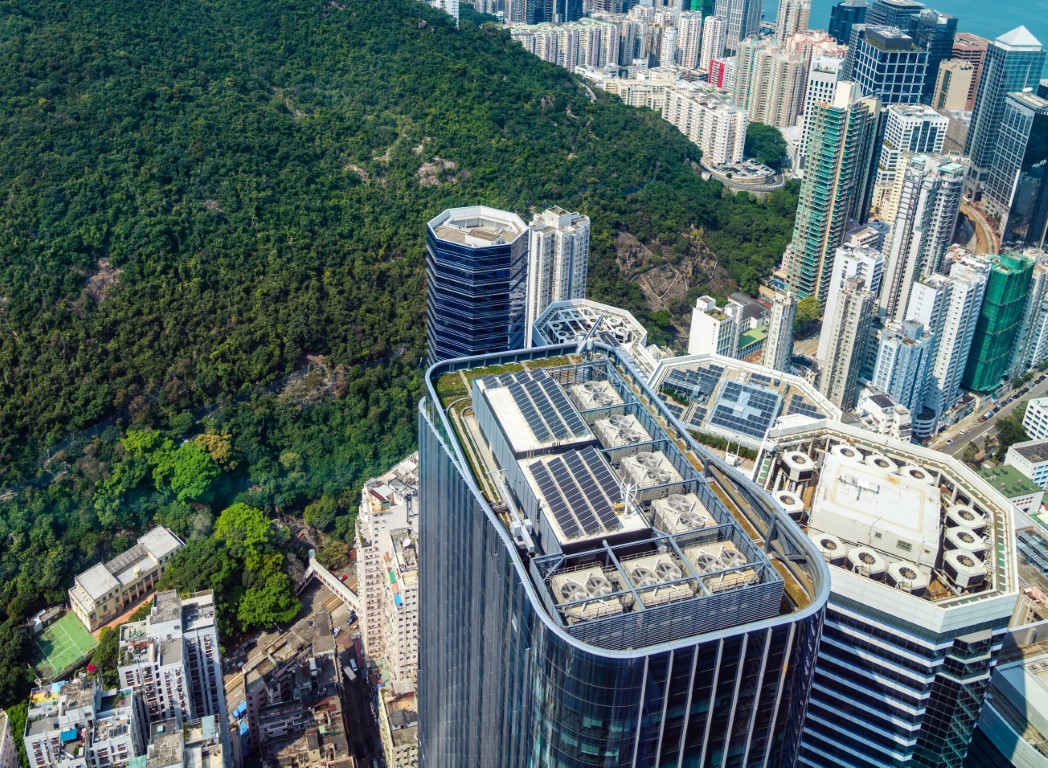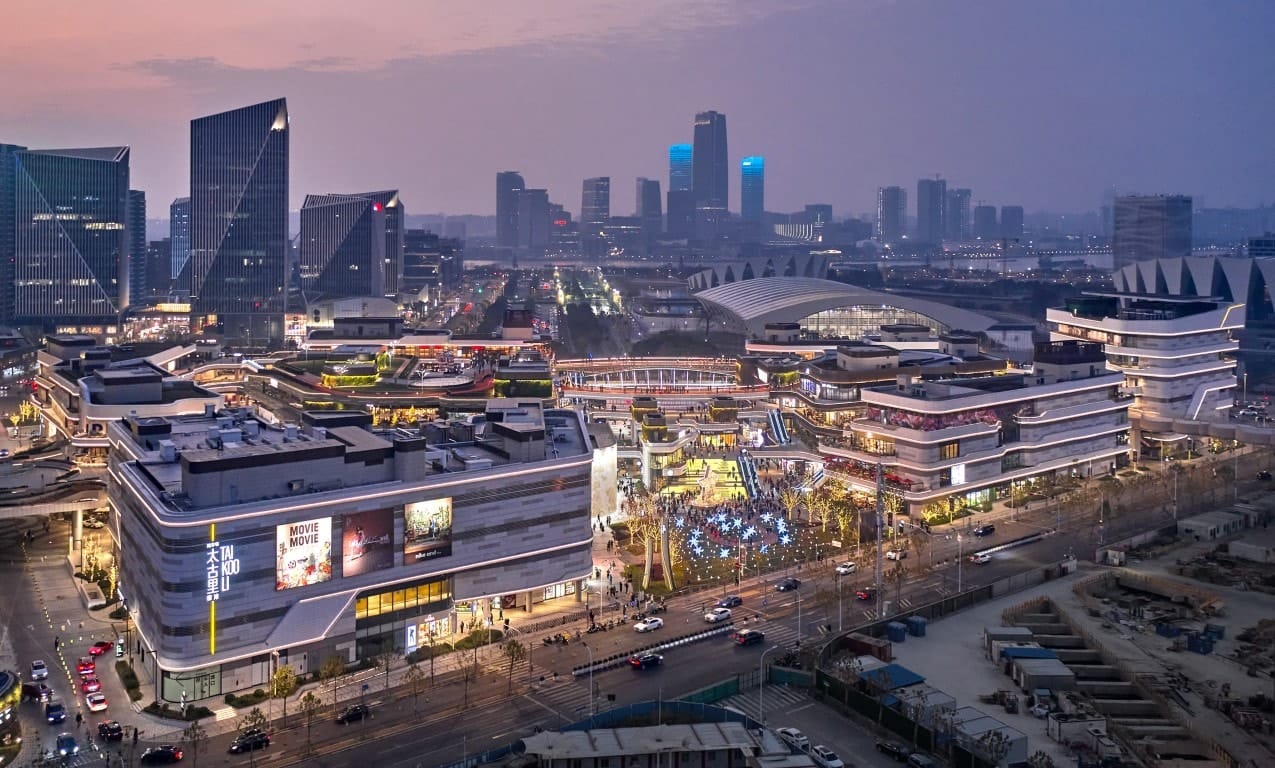Reporting Boundary:
(a)
Our Hong Kong portfolio, Chinese Mainland portfolio and U.S.A. portfolio refer to office and retail portfolio in Hong Kong, the Chinese Mainland and Miami, U.S.A. respectively, excluding hotels.
(b)
Hotels refer to Swire Hotels, serviced apartments and restaurants in Hong Kong and the Chinese Mainland.
*
Taikoo Li Sanlitun West and Taikoo Li Qiantan are newly included in 2022.
Notes:
R -
Denotes sustainability data that has been reported on by Deloitte Touche Tohmatsu. Please refer to the Independent Limited Assurance Report for further details.
(1)
The data has been adjusted to reflect actual situation.
(2)
The total energy consumption refers to energy consumption for the provision of shared services for and in the common parts of our buildings.
(3)
Calculation standards and methodologies for carbon emissions:
(i)
Carbon emissions are calculated using:
(a)
“Guidelines to Account for and Report on Greenhouse Gas Emissions and Removals for Buildings (Commercial, Residential or Institutional Purposes) in Hong Kong” published by the Environmental Protection Department (EPD) and the Electrical and Mechanical Services Department (EMSD) of the Hong Kong Government.
(b)
GHG Protocol published by the WBCSD and the World Resources Institute.
(ii)
Carbon dioxide (CO2), methane (CH4), nitrous oxide (N2O) and hydrofluorocarbons (HFCs) are included in greenhouse gas (GHG) calculations. Perfluorocarbons (PFCs), sulphur hexafluoride (SF6) and nitrogen trifluoride (NF3) are not applicable.
(iii)
Direct carbon emissions included industrial diesel, ULSD, biodiesel (for CH4 and N2O emissions), petrol, town gas, natural gas and refrigerant containing HFCs refilled.
(iv)
Indirect carbon emissions included non-renewable electricity purchased, off-site renewable electricity purchased (via power purchase agreement), on-site renewable electricity generated, district heating and cooling (energy purchased from local utility companies) and town gas.
(v)
Market-based method for indirect carbon emissions (as defined by GHG Protocol Scope 2 Guidance) refers to a method to quantify scope 2 emissions based on GHG emissions emitted by the generators from which the reporter contractually purchases electricity bundled with instruments, or unbundled instruments on their own.
(vi)
Location-based method for indirect carbon emissions (as defined by GHG Protocol Scope 2 Guidance) refers to a method to quantify scope 2 emissions based on average energy generation emission factors for defined locations, including local, subnational, or national boundaries.
(vii)
Biogenic carbon emissions (as defined by GHG Protocol Scope 2 Guidance) refers to CO2 emissions from the combustion or biodegradation of biomass.
(viii)
The sources of emission factors for the reporting of carbon emissions are:
(a)
Sustainability reports of the local utility companies (for electricity and town gas in Hong Kong).
(b)
“Guidelines to Account for and Report on Greenhouse Gas Emissions and Removals for Buildings (Commercial, Residential or Institutional Purposes) in Hong Kong” published by the EPD and the EMSD of the Hong Kong Government.
(c)
“Guidelines to Defra’s Greenhouse Gas Conversion Factors for Company Reporting” by the Department for Environment, Food and Rural Affairs (Defra) of the UK.
(d)
For market-based indirect carbon emissions calculation (for the Chinese Mainland since 2020): “Methodology for Carbon Emissions Reduction in Commercial Complex Buildings” (by Tsinghua University) published in Journal of Building Energy Efficiency (Nov 2020 Edition), and references from the Chinese Mainland government and industry associations including China Renewable Energy Development Assessment Report by National Energy Administration, China Energy Statistical Yearbook by National Bureau of Statistics and China Electricity Market Annual Report by China Electricity Council.
(4)
Waste directed to disposal (Hazardous) are collected by licensed waste collectors. Waste directed to disposal (Non-hazardous) are sent to landfill.
(5)
Construction and demolition waste includes non-excavated construction and demolition waste except materials sent to public fill.
(6)
Grease trap oil refers to waste oil separated from grease trap waste, one of the two by-products of grease trap waste aside from wastewater. Grease trap oil generation is calculated using “A Study to Promote Recycling of Plastic, Paper and Used Cooking Oil in Hong Kong” published by the Hong Kong Productivity Council.
(7)
Food processing oils include used cooking oil and grease trap oil.
(8)
Electricity use intensity refers to electricity consumption (per square metre) for the provision of shared services for and in the common parts of our buildings, excluding car parking spaces and internal offices.
(9)
The sale of Two Brickell City Centre and Three Brickell Centre were completed in July 2020, and the data has been removed from the reporting boundary since then.
(10)
The sale of EAST Miami was completed in November 2021, and the data has been removed from the reporting boundary since then.
(11)
Total hazardous waste generated is the sum of total hazardous waste disposed and recycled.
(12)
Total non-hazardous waste generated is the sum of total non-hazardous waste disposed, reused, recycled and recovered.
(13)
Total non-hazardous waste diverted from disposal is the sum of total non-hazardous waste reused, recycled and recovered.
(14)
Total waste generated includes construction & demolition waste generated from our new development projects, commercial waste generated from our own operations and downstream leased assets, domestic waste generated from our residential portfolios, and special waste generated from our own operations.
(15)
All disposed, reused, recycled and recovered waste was managed by respective waste management companies or organisations off-site.
Reporting Boundary:
(a)
Our Hong Kong portfolio, Chinese Mainland portfolio and U.S.A. portfolio refer to office and retail portfolio in Hong Kong, the Chinese Mainland and Miami, U.S.A. respectively, excluding hotels.
(b)
Hotels refer to Swire Hotels, serviced apartments and restaurants in Hong Kong and the Chinese Mainland.
*
Taikoo Li Sanlitun West and Taikoo Li Qiantan are newly included in 2022.
Notes:
R -
Denotes sustainability data that has been reported on by Deloitte Touche Tohmatsu. Please refer to the Independent Limited Assurance Report for further details.
(1)
The data has been adjusted to reflect actual situation.
(2)
The total energy consumption refers to energy consumption for the provision of shared services for and in the common parts of our buildings.
(3)
Calculation standards and methodologies for carbon emissions:
(i)
Carbon emissions are calculated using:
(a)
“Guidelines to Account for and Report on Greenhouse Gas Emissions and Removals for Buildings (Commercial, Residential or Institutional Purposes) in Hong Kong” published by the Environmental Protection Department (EPD) and the Electrical and Mechanical Services Department (EMSD) of the Hong Kong Government.
(b)
GHG Protocol published by the WBCSD and the World Resources Institute.
(ii)
Carbon dioxide (CO2), methane (CH4), nitrous oxide (N2O) and hydrofluorocarbons (HFCs) are included in greenhouse gas (GHG) calculations. Perfluorocarbons (PFCs), sulphur hexafluoride (SF6) and nitrogen trifluoride (NF3) are not applicable.
(iii)
Direct carbon emissions included industrial diesel, ULSD, biodiesel (for CH4 and N2O emissions), petrol, town gas, natural gas and refrigerant containing HFCs refilled.
(iv)
Indirect carbon emissions included non-renewable electricity purchased, off-site renewable electricity purchased (via power purchase agreement), on-site renewable electricity generated, district heating and cooling (energy purchased from local utility companies) and town gas.
(v)
Market-based method for indirect carbon emissions (as defined by GHG Protocol Scope 2 Guidance) refers to a method to quantify scope 2 emissions based on GHG emissions emitted by the generators from which the reporter contractually purchases electricity bundled with instruments, or unbundled instruments on their own.
(vi)
Location-based method for indirect carbon emissions (as defined by GHG Protocol Scope 2 Guidance) refers to a method to quantify scope 2 emissions based on average energy generation emission factors for defined locations, including local, subnational, or national boundaries.
(vii)
Biogenic carbon emissions (as defined by GHG Protocol Scope 2 Guidance) refers to CO2 emissions from the combustion or biodegradation of biomass.
(viii)
The sources of emission factors for the reporting of carbon emissions are:
(a)
Sustainability reports of the local utility companies (for electricity and town gas in Hong Kong).
(b)
“Guidelines to Account for and Report on Greenhouse Gas Emissions and Removals for Buildings (Commercial, Residential or Institutional Purposes) in Hong Kong” published by the EPD and the EMSD of the Hong Kong Government.
(c)
“Guidelines to Defra’s Greenhouse Gas Conversion Factors for Company Reporting” by the Department for Environment, Food and Rural Affairs (Defra) of the UK.
(d)
For market-based indirect carbon emissions calculation (for the Chinese Mainland since 2020): “Methodology for Carbon Emissions Reduction in Commercial Complex Buildings” (by Tsinghua University) published in Journal of Building Energy Efficiency (Nov 2020 Edition), and references from the Chinese Mainland government and industry associations including China Renewable Energy Development Assessment Report by National Energy Administration, China Energy Statistical Yearbook by National Bureau of Statistics and China Electricity Market Annual Report by China Electricity Council.
(4)
Waste directed to disposal (Hazardous) are collected by licensed waste collectors. Waste directed to disposal (Non-hazardous) are sent to landfill.
(5)
Construction and demolition waste includes non-excavated construction and demolition waste except materials sent to public fill.
(6)
Grease trap oil refers to waste oil separated from grease trap waste, one of the two by-products of grease trap waste aside from wastewater. Grease trap oil generation is calculated using “A Study to Promote Recycling of Plastic, Paper and Used Cooking Oil in Hong Kong” published by the Hong Kong Productivity Council.
(7)
Food processing oils include used cooking oil and grease trap oil.
(8)
Electricity use intensity refers to electricity consumption (per square metre) for the provision of shared services for and in the common parts of our buildings, excluding car parking spaces and internal offices.
(9)
The sale of Two Brickell City Centre and Three Brickell Centre were completed in July 2020, and the data has been removed from the reporting boundary since then.
(10)
The sale of EAST Miami was completed in November 2021, and the data has been removed from the reporting boundary since then.
(11)
Total hazardous waste generated is the sum of total hazardous waste disposed and recycled.
(12)
Total non-hazardous waste generated is the sum of total non-hazardous waste disposed, reused, recycled and recovered.
(13)
Total non-hazardous waste diverted from disposal is the sum of total non-hazardous waste reused, recycled and recovered.
(14)
Total waste generated includes construction & demolition waste generated from our new development projects, commercial waste generated from our own operations and downstream leased assets, domestic waste generated from our residential portfolios, and special waste generated from our own operations.
(15)
All disposed, reused, recycled and recovered waste was managed by respective waste management companies or organisations off-site.







